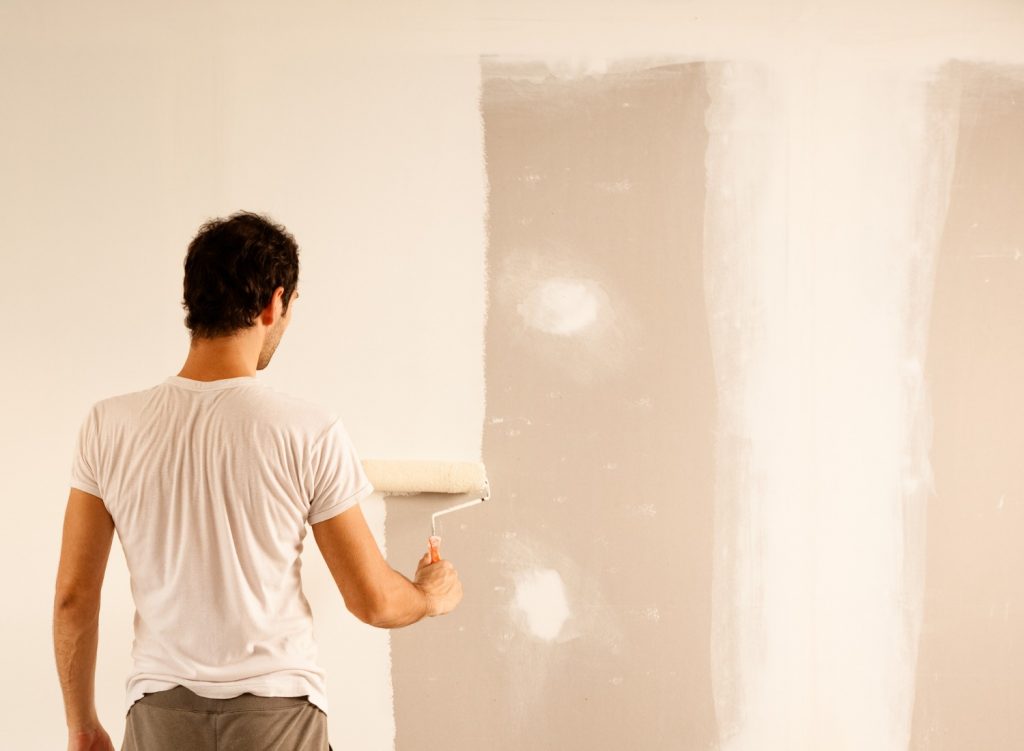Painting Drywall: Which Type of Paint Is Best?

Nothing quite does the job when giving your space a fresh, new look like a sleek coat of paint on drywall. But before you dive into your overalls and arm yourself with rollers and brushes, there’s a crucial question you need to answer: which type of paint is best for your walls? This isn’t just about picking your favorite shade—it’s about choosing the right type of paint that will cling to your drywall, stand the test of time, and, perhaps most importantly, make your walls look fabulous.
Pre-Painting Considerations
Before diving into the painting process, several pre-painting considerations must be remembered. These steps will ensure a better result and prolong the paint job’s life.
Clean and prime the walls
Properly cleaning the drywall surface is crucial for paint adhesion. Remove dirt, dust, or grease using a mild detergent and water solution. Rinse off the cleaning solution and allow the surface to dry completely before priming. Priming the drywall with a high-quality primer helps seal the surface, provides better paint adhesion, and enhances the paint job’s durability.
Make necessary repairs
Repair any imperfections on the drywall, such as dents, holes, or cracks. Use a spackling compound or joint compound to fill in these imperfections, ensuring a smooth and even surface. Sand the patched areas to blend them seamlessly with the surrounding drywall. This step helps to achieve a professional finish.
Select the right paint
Consider the room’s function and lighting when selecting paint. High-traffic areas may require more durable paint, while rooms with limited natural light may benefit from lighter paint colors. Additionally, consider the desired finish, as different paint sheens offer different levels of durability and aesthetic appeal.
Types of Paint for Drywall
Choosing the right drywall paint type is crucial for achieving the desired results. There are several options available, each with its pros and cons.
Oil-based paints
Oil-based paints were once the go-to option for painting drywall. They provide excellent durability and resistance to stains and moisture. However, they have a strong odor, longer drying times, and require using solvents for cleanup. Oil-based paints are less commonly used today due to the availability of water-based alternatives.
Water-based paints
Water-based paints, such as acrylic and latex, have become popular for painting drywall. They have a quick drying time, low odor, and are easy to clean up with water. Acrylic paints offer good durability and are suitable for most drywall applications. Latex paints, on the other hand, are more flexible and resistant to cracking, making them ideal for areas prone to temperature fluctuations.
High-gloss paints
High-gloss paints provide a shiny and reflective finish, making them popular for trim and doors. They are highly durable and resistant to stains and fingerprints. However, high-gloss paints tend to highlight surface imperfections, so they may not be suitable for rough or uneven drywall surfaces.
Specialty paints
Specialty paints are available for specific drywall painting needs. Anti-microbial paints help prevent the growth of mold and mildew, making them suitable for bathrooms and other humid areas. Eco-friendly paints have low or no volatile organic compounds (VOCs), making them a safer choice for indoor air quality.
Matte, eggshell, and satin finishes
Matte, eggshell, and satin finishes are commonly used for painting drywall. Matte finishes have a flat appearance and are ideal for hiding surface imperfections. Eggshell finishes have a slight sheen and provide better washability. Satin finishes offer a subtle shine and are durable enough for high-traffic areas.
Paint Application Techniques
Applying paint to drywall requires the right techniques and tools to achieve a smooth and professional finish.
Brush vs. roller vs. sprayer
There are several methods for applying paint to drywall, including using brushes, rollers, or sprayers. Brushes offer more control and are ideal for cutting in and painting corners. Rollers are efficient for covering large areas quickly. Handheld paint sprayers provide a smooth and even finish but require more skill to use effectively.
Cutting in and painting corners
Cutting in refers to painting the edges and corners of the drywall using a brush. This technique helps achieve a clean and precise finish, especially near trim, ceilings, and corners. Use masking tape or a steady hand to create sharp lines and avoid overlapping onto adjacent surfaces.
Achieving a smooth finish
To achieve a smooth finish on drywall, it’s important to apply paint evenly and avoid visible brush or roller marks. Use long, even strokes and maintain a wet edge while painting. Apply multiple thin coats rather than one thick coat to prevent drips and uneven drying.
Properly removing and installing
Painting around trim, molding, and wall accessories like outlet covers and light switches can be challenging. Though masking tape for painting can help, many people opt to remove these fixtures and reinstall them once the paint is dry.
An electric screwdriver is invaluable for fast removal and installation, significantly enhancing the preparation and final outcome of your project. It also saves time and reduces the physical effort required, making it a practical addition to any drywall painting toolkit.
Conclusion
Following the guidelines in this comprehensive blog post, you can confidently select the best type of paint for your drywall project. Consider the specific needs of the room, the desired finish, and the durability requirements when making your paint selection. With proper preparation, application techniques, and maintenance, you can achieve a professional-looking paint job that enhances the beauty and longevity of your drywall.
